| Return home |  |
Return to previous page |
May 2005: New Zealand Redux
Do you remember the mentions of Michael Organ above?
Here he comes again!
Here is the Metropolis film Wiki
(an almost identical passage is in Wikipedia):
|
In 2005,
Wollongong-based historian and politician
Michael Organ
examined a print of the film in the
National Film Archive of New Zealand.
It had been thought that it was the same cut as the Australian version,
but Organ discovered that it contained missing scenes not seen in the cut versions of the film.
After hearing of the discovery of the Argentine print of the film and the restoration project currently under way,
Organ contacted the German restorers about his find.
The New Zealand print was found to contain 11 missing scenes
and included seconds of footage which were missing from the Argentine print
and also footage which could be used to restore damaged sections of the Argentine print.
It is believed that the editor in charge of editing the New Zealand print
for some unknown reason excised different scenes than that of the Australian print
keeping scenes missing from other versions intact.
It is believed that the Australian, New Zealand and Argentine prints were all sourced from the same master.
The newly discovered footage was used in the restoration
project.[25]
|
Wikipedia includes footnote 100:
Pennells, Steve (14 February 2010). “Cinema’s Holy Grail”. Sunday Star Times.
New Zealand. p. C5.
Fantastic. Great. Wonderful. But where can I read that article?
Just now, a prominent researcher sent me a link:
Steve Pennells, “Found: A Legendary Lost City ... and One Hell of a Director’s Cut,”
The Age, 14 February 2010. Hoorah!
A few remaining questions: What was the length of the New Zealand version?
I would love to study this New Zealand print, but how? Where is it? Who has it?
ANSWERS: I asked, and the answers were kindly supplied.
The NZ print was 9,350' in 1928, but was reduced to 7,658' for a planned 1942 reissue through the Rank Organisation.
Here are the details, on a blog that I never even knew about:
Michael Organ,
Metropolis New Zealand print 1928, 6 May 2005.
And here’s a low-res overscan of the first half of the print:
The above is fascinating.
It is mostly an original 1928 print, but later abbreviated.
When you watch this, pay attention to the sprocket holes, the frame lines, and the apertures.
Most of the scenes have BH sprocket holes but the titles have Academy sprocket holes.
Many shots have a duplicated frameline.
Generally, this indicates a dupe that was misframed in the printer.
In most of these instances, though, I suspect it was a lab error right from the get-go .
I don’t understand these things.
I’ll need to chat with some lab folk who could explain this to me.
We can see that the scenes in this version were compiled from more than six different cameras,
each of which had a differently cut aperture, most of which, strangely, were undercut
and would result on black borders on the left and right sides of the screen.

We can see a hint of the Bell & Howell sprocket holes on the left.
The camera aperture is .720" tall by a mere .878" wide, with rounded corners.
I would love to learn about the scanner that was used to make this transfer.
Make? Model? Instruction booklet? Orientation video? Anything?
That translucent mask on the left occasionally shifts.
It must be performing some sort of vital function, but I have never operated a scanner and am left befuddled.
As the film progresses, sometimes the mask on the left
suddenly becomes opaque and covers the sprocket holes entirely.
I cannot imagine how.

Note how bad the contrast is. That is because this is a dupe that was slugged in to replace a damaged original. We can see a duplicated frame line at the top, the result of misframing the dupe in the printer. On the left we can see a tiny bit of the Academy sprocket holes, but behind them is an image of the original Bell & Howell sprocket holes from the earlier print.
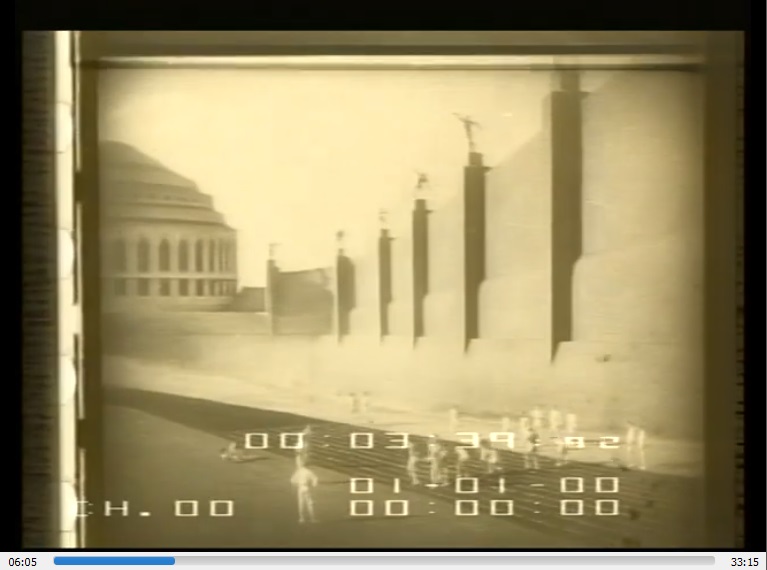
A hint of the Bell & Howell sprocket holes on the left.
The camera aperture is .734" tall by at least .902" wide, with square corners. The height is difficult to determine with exactitude, since the duplicated frame line duplicates a bit of the top. The width is difficult to determine with exactitude, since the scanner masked off the right side.
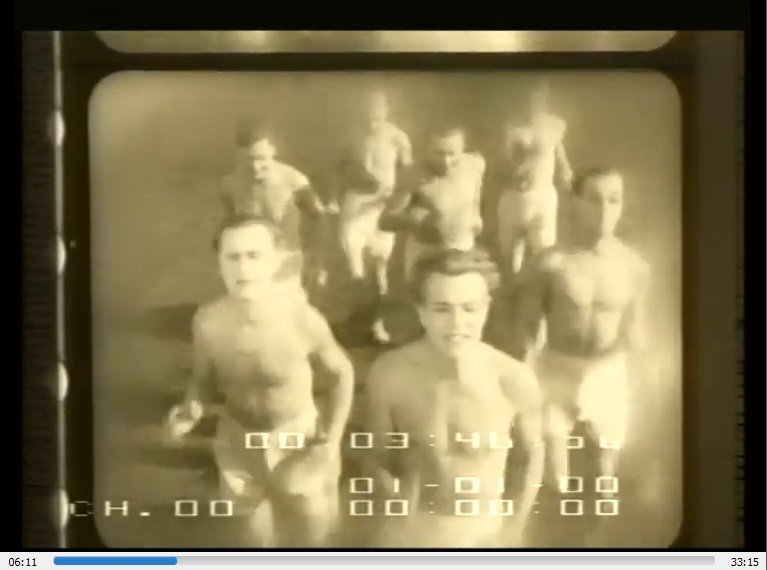
Freder in the lead.
We can see a hint of the Bell & Howell sprocket holes on the left.
The camera aperture is .723" tall by a mere .894" wide, with rounded corners.

We can see a hint of the Bell & Howell sprocket holes on the left.
The camera aperture is about .740" tall by .923" wide, with square corners.
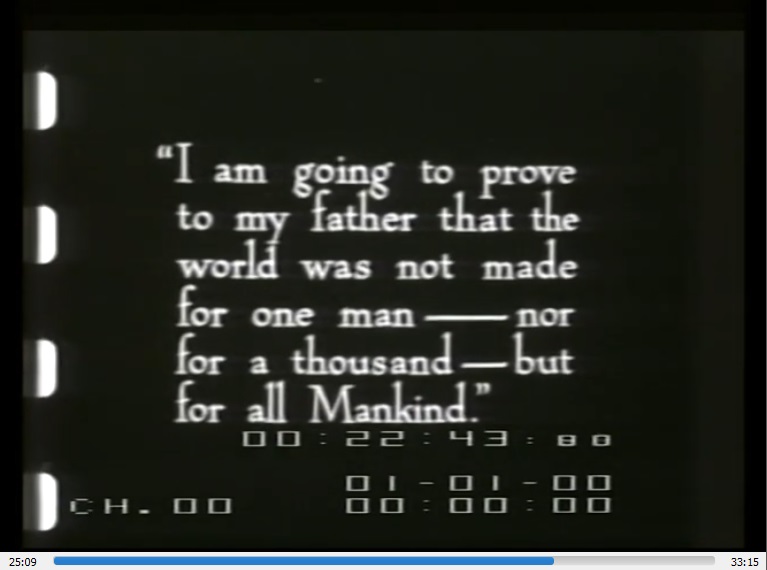
Here we’ve got a title with Academy sprocket holes. Whether the titles were included in the print shipped from Ufa, or whether they were added by the local Australian lab, I do not know. It seems that the splice at the end of this title caused some damage to the following scenes.

Academy sprocket holes! Why? It appears that this is replacement footage.
Not a dupe, but replacement footage ordered from Ufa.
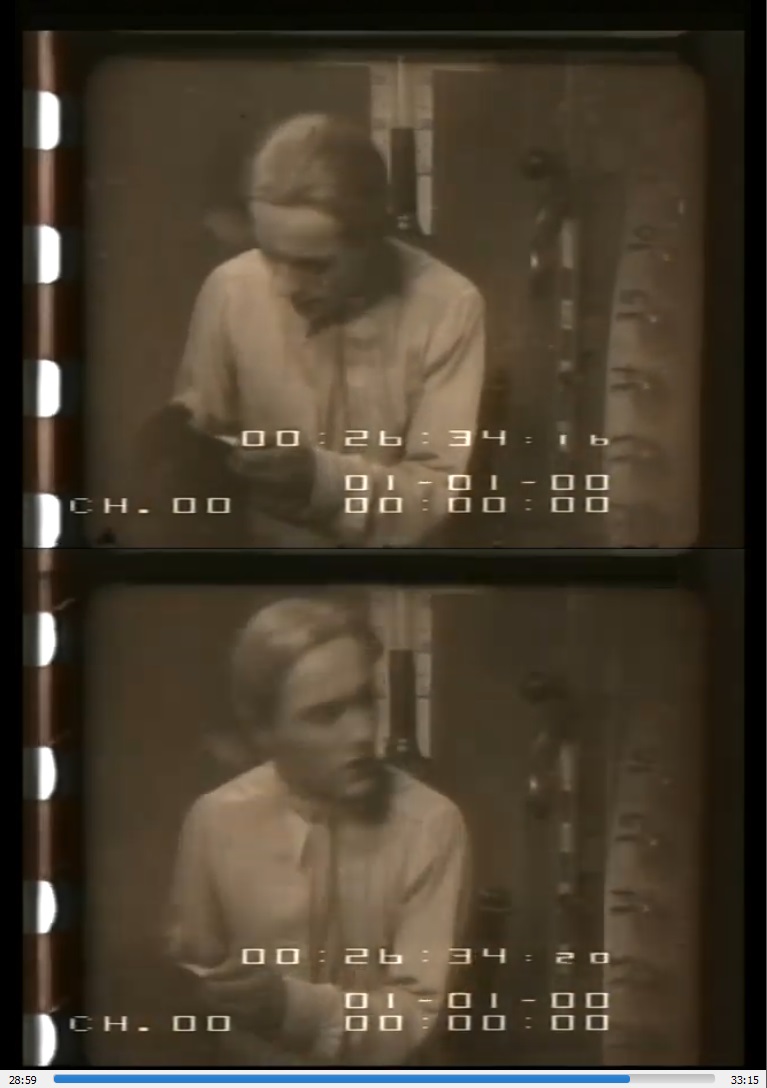
Yup. It’s replacement footage.
Here is where the replacement footage splices back into the original footage, with a jump in the action.
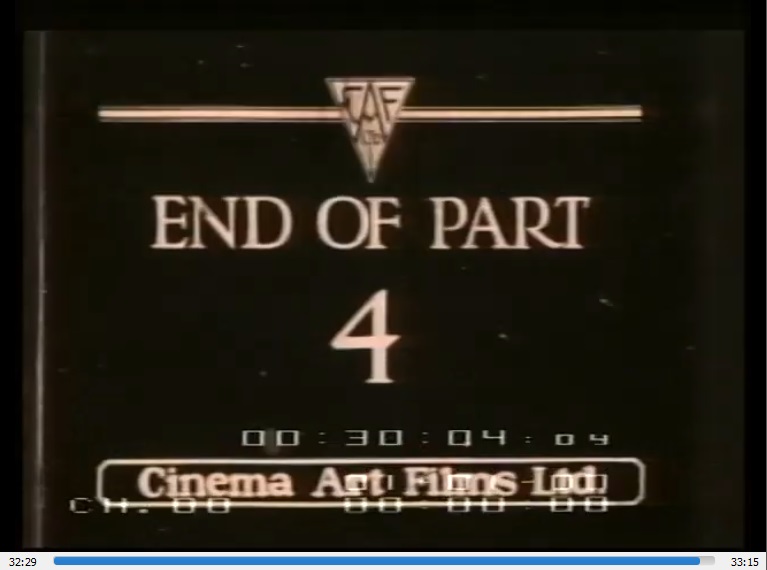
I live for these things.
